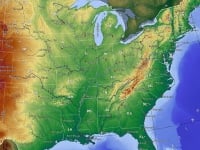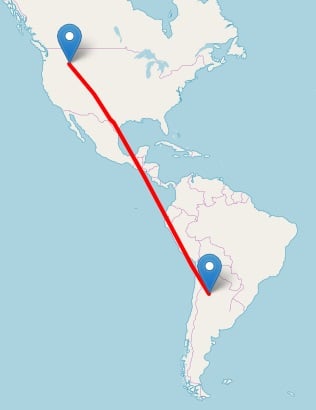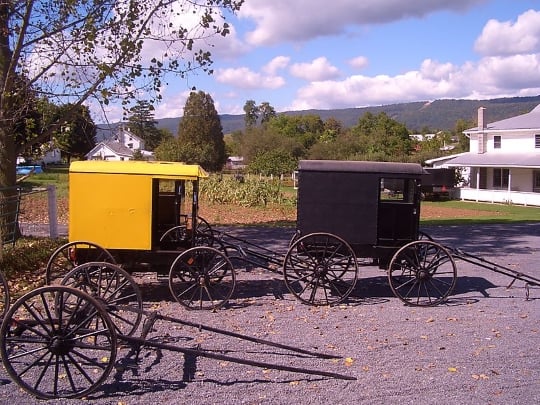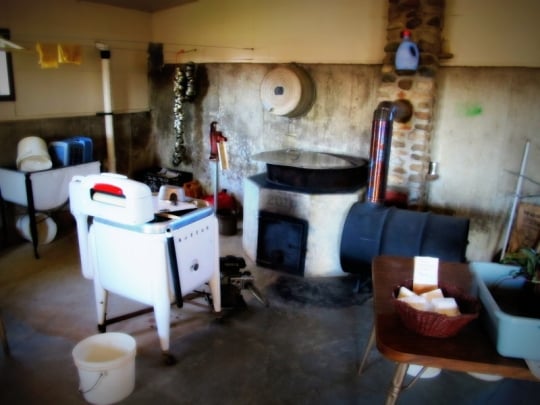From Idaho to Argentina: The Amish Population in 2019
The Young Center has just published their annual Amish population numbers.
 As of 2019, an estimated 342,100 Amish live in four different countries.
As of 2019, an estimated 342,100 Amish live in four different countries.
That includes Amish in:
- 31 US States
- 4 Canadian Provinces
- One settlement each in Bolivia and Argentina
There don’t seem to be any big surprises after looking over the figures. Unlike most recent years, there were no new states, provinces, or countries added to the latest list.
I did pull some interesting facts from the data, however.
Did you know that…
- Amish live in 568 separate settlements.
- A settlement can be as large as Lancaster County (39,000+ Amish). Or it might have just three or four households.
- There are more Amish in the Lancaster County settlement than in the smallest 23 states combined.
- Nearly 63% of all Amish live in one of three states: Pennsylvania, Ohio, or Indiana.
- The top 10 states account for over 92% of all Amish.
- The data includes a table showing how the Amish population has changed since 1992. Since then, Amish have settled in 10 new states, 3 new provinces, and the 2 South American countries.
- However, there is one place which had Amish in 1992, but has none today: Georgia.
- The places with the smallest Amish populations are Idaho and Argentina, at an estimated 50 people each.
As I write that, I find myself thinking it’s kind of amazing that Amish live in places as different and distant from each other as Idaho and Argentina.
If the Amish from Idaho wanted to visit their spiritual brethren in Argentina, they’d need to travel about 6,000 miles (as the crow flies).

The Amish continue to grow rapidly. And they’re not only growing, but moving to new places. They created a net total of 19 new settlements since the figures were tallied last year.
If you don’t have an Amish community within a drive of an hour or two, that could change in the not-too-distant future.




Great information.
Great graphics and great statistics. It just keeps growing, not only in sheer numbers, but regional expansion as well. What I find significant is that the Salmon, Idaho settlement, for example, was started by families who came from St. Ignatius, MT, not by a settlement far to the east. Both are New Order. This suggests a more autonomous form of regional diversity, spurred in part by links through affiliations.
I didn’t realize that Salmon, ID was New Order. So in theory that means they could make my as-the-crow-flies journey by actually…flying. Though probably not by direct flight:) Interesting point Joe, thanks for the comment. So maybe there will be a further hopscotch to Washington state or Oregon…
Amish in Georgia
I’m in Georgia and was wondering where the Amish were in Georgia. I didn’t think we ever had Amish. I know we’ve got several mennonite communities but no Amish.
I don’t have the source in front of me now, but I’ll check and let you know. There is also an existing Beachy Amish church in Montezuma.
https://gameo.org/index.php?title=Montezuma_Mennonite_Church_(Montezuma,_Georgia,_USA)
Amish in Georgia in the 1990s
Matt the Georgia Amish settlement at that time was located in Montgomery County, Uvalda area. It existed from 1990-1995, according to David Luthy’s Why Some Amish Communities Fail: Extinct Settlements, 1961-2007.
There were two other Georgia communities as well, in Pulaski County and Appling County, but the last of those two was defunct by 1937 (detailed in Luthy’s The Amish in America: Settlements That Failed, 1840-1960).
Mennonites
I’m familiar with the conservative Mennonite community in Montezuma. There are several other conservative mennonites spread thru the state. I was just wondering if there was a horse and buggy community.
I always appreciate it every year when you inform us that Young Center has just published their new statistics. I agree with you that it is kind of amazing that the Amish population continues to grow rapidly and I’m sure is growing even as I write this. Just in the past two months, I’ve learned of
two new settlements in areas I’m familiar with — Spring Valley, Minn., and Breckinridge County, Ky. (near Stephensport). I wonder if they were included in the 2019 statistics. Do you know what the end date is for each year’s statistics?
Glad to hear Al, I know you appreciate these annual updates. For me, I always enjoy looking through and seeing if there are any unusual figures or ways of presenting the numbers. This time around it occurred to me to compare Lancaster County with the small states…kind of gives a sense of the size of that community and also that many of these states have very small Amish populations, but also that the Amish are quite spread about the country.
I did just ask YC when is the cutoff for the numbers, and I’ll let you know what I hear.
Al, I heard back from the YC, and just emailed you on this – might be easier to follow up on these settlements over email, when you get a chance.
Stephensport
Al — you mentioned that you learned of a new settlement called Stephensport, KY (Breckinridge County). Can you provide more detail about that one, if you know more. Thanks in advance. Joe Donnermeyer
Irish Amish
To add to your list of Amish settlements..i visited a Amish/Mennonite community in Dunmore East, Ireland (near Waterford)last summer. It is composed of approx 75-80 members, mostly from the U.S.A.
That’s an interesting one Ed, had heard about it – there have been quite a few articles on the community for those interested:
https://www.independent.ie/lifestyle/unique-irish-community-the-amish-of-dunmore-east-26794029.html
http://www.universitytimes.ie/2014/09/the-irish-amish/
https://www.thejournal.ie/amish-mennonite-community-dunmore-waterford-3340453-Apr2017/
As for this list of communities, the Young Center are just including horse-and-buggy Amish. But it is neat to know about this Irish community, and maybe would make an interesting post.
How was that experience of visiting the community? Sounds like they have a bakery and some shops, and ties to the US.
Irish Experience
The Dunmore East Irish community is not a typical “horse and buggy” community. Unfortunately, having a horse and buggy would be a dangerous situation due to extremely narrow and winding roads with many roads having ancient stone walls on both sides of the road without a way of egress. The homes and businesses have small cars and the occasional motorcycle in their driveways. A very busy Amish convenience store is complete with gas and diesel pumps, bakery with awesome European breads and their “famous” carrot cake.
Also, there is a community center building where weekly church services are held and open to the public. Since I am very involved with the Dansville and Conewango Valley Amish settlements in New York it was a “must see visit” for me.
Hi Ed,
From what I can see Etown only counts the Old Order horse and buggy Amish population. They do not count para-Amish, Amish-Mennonite branches, or New Order Amish. I agree with them on that. It makes sense to count only actual Amish communities. There are several reasons, and one of them is demographically the Old Order are growing, while many New Order are not. So it would skew with accuracies of keeping track of the demographics of actual Amish. The second and third reasons are because beliefs and customs. The Beachy Amish of Ireland are what exactly? Are they Amish, Mennonites, Evangelist? How do you define them? It’s the reason why Old Order Mennonites are not considered Amish even though they have many similarities.
Most importantly, the way of life must be considered. The way of life has always defined the Amish. Those that don’t live it, and especially those that have limited background with it cannot be called Amish.
Further Detail?
Erik, I don’t suppose there is an accessible link to the detail behind the population stats — specifically, a listing of the individual communities by state? I see that the information you give here shows my home state of Arkansas to currently have 2 communities, down from 3. We’ve done an article on the one that disbanded (“Ghost Town” of Rector AR) plus another one on the Salem AR settlement. I’m curious what the 3rd community is.
The 2 Arkansas Amish settlements
Don I’ve asked before, and they actually don’t publicize those tables. But I think we’ll see an update to Joe Donnermeyer and David Luthy’s tables at some point in the not too distant future 🙂
https://kb.osu.edu/bitstream/handle/1811/57700/JAPAS_Donnermeyer_Luthy_vol1-issue2_pp107-129.pdf?sequence=1
As for Arkansas, the two settlements that exist today are Salem in Fulton County as you mention, and also Benton County (Gentry/Siloam Springs area). Are you familiar with that area?
Yes, I have the 2013 JAPAS PDF bookmarked and make regular reference back to it. But at now 6 yrs old it is a bit outdated at points, and an update would be greatly welcomed.
I have been through the Gentry / Siloam Springs area a very few times — so I would say I’ve been exposed to it more than familiar with it. It is way off from my normal travels, so it would take a special trip and not just a small side excursion. But who knows — might decide to get it a go sometime.
Amish settlement growth and more
Erik is correct about the two in Arkansas. The one called Siloam Springs was difficult to pin down because it is so close to the border with Oklahoma and reporters in the the Budget and The Diary and other sources would refer to the name of different towns — Gentry, Decatur, Lincoln, and Siloam Springs. Plus, there is a Siloam Springs, Oklahoma just a few miles from the Arkansas town of the same name.
The good news, as I understand it, is that the Young Center will begin to publish a list of Amish communities, but likely a few months out yet. So, with all of the communication between those with interests in the growth of Amish settlements, there is a chance to keep up with the developments. The average is 17.1 per year (and 2.8 extinct), based on my count of the number founded from 2010 through 2018. From 2000-2009, the average was 15.9 (and 3.8 extinct). So, the rate of growth is increasing.
If you contact me (donnermeyer.1@gmail.com), I can send to you the list of settlements, which I have. This is the one developed with Dave Luthy and the files of the Pathway Heritage Historical Library. It may be slightly different than the Young Center list, but with two lists available for public consumption, those handful of differences can be resolved.
On another issue — I just returned from a wonderful conference held in Millersburg. It was “Addressing the Health Care Needs of Amish and Plain Communities”, organized by the Center for Appalachia Research in Cancer Education. A lot of good information about health. About 120 in attendance. There was also one the next day by the Amish Population and Studies Association, and also in Millersburg. About 50 in attendance (some were stay overs from the CARE conference), and a variety of topics.
As always Don, we’d be happy to heat about it if you do make a visit.
You bet. I’ll let you know if I do.
So based on current rates we can assume that in 5-6-yrs there will be nearly 400,000 Amish, and 7-8 yrs after that there will be close to 500,000…. It will have taken 10-yrs to add 100,000 from 300,000 to 400,000. After that, only 7-8 yrs to reach 500,000. From 500,000 to 600,000 should only be 5-6 yrs (if God blesses). That is pretty fast growth in such a short period of time. It will be even more noticeable in the years to come as long as demographics stays the same because of their share population size the growth will start to see faster and faster.
Doubling time
Doubling time is a demographic term that refers to the time it takes a population to double in size. Nice to see that scientists on occasion can use a term that is easy for others to understand 🙂 I published an article in the Journal of Amish and Plain Anabaptist Studies in 2015 (volume 3, issue 1) that estimated the doubling time at 20.49. In other words, 20.5 years. It is likely the original source for the Young Center statement of doubling time. Settlements are growing commensurately. As I mentioned in a previous post, the average is 17.1 per year (and 2.8 extinct), based on my count of the number founded from 2010 through 2018. From 2000-2009, the average was 15.9 (and 3.8 extinct). So, the rate of growth is increasing. From these numbers, and over a cup of coffee or tea, one can extrapolate out to 2050. The numbers are staggering. What are the consequences? (and that is not meant as “dire” consequences, simply, how will it change Amish society?). My answer is that it will create more diversity in terms of fellowships, but it is impossible to say if some will veer toward a progressiveness on technology that includes giving up on the horse-and-buggy. The settlement counts (either my work with the Pathway Heritage Historical Library or the Young Center) are counts of buggy-driving Amish only.
Hi Joe. Correct me if I’m wrong, but if you look at Amish history in North America there were splits every 50-70 yrs.
In the mid-1800s, there was a large number of Amish that veered towards the mainstream. Then again in the early 1900s, and once again in the mid-1900s. If I’m not mistaken, the greatest split occurred in the early 1900s when as much as 2/3rds of the churches veered towards the mainstream. There hasn’t been a large split since that time, so maybe that will happen and if overdue. Population can’t be accurately predicted into the future.
Then again, look at the Amish population currently. Never in history has there been so many Amish. The birth rate is still stable. 60-yrs ago a lot of people spoke of the Amish as a dying way of life. 30-yrs ago it was seen as a small regional minority. Today, there is over 300,000 in almost every eastern state. They are already having an impact on parts of America, especially rural America. I would say most of it positive. They are buying up farms and land and reviving many small towns that were dying, adding businesses, and culinary and craft traditions that bring an area to life.
Indeed, you are right
Greetings AJ and all Amish America readers
You are right. A split where a large group decide to no longer identify as “Amish” and no longer prohibit ownership of a motor vehicle could reduce the estimated population size of the Amish over the next several decades. Nonetheless, they will likely be plain Anabaptist. One of the curious things that happened since 1900, that is, over the past 120 years, that the diversity within the Amish is due to a number of divisions, and unlike in the 18th and 19th century, most simply became a different fellowship of Amish. Regardless, there will be more and more diversity. So, we shall see what happens.
Joe Donnermeyer
Amish settlements in Arkansas
Don
There is a small Amish settlement in the Bellville area just a little west of Danville off of hwy 10. I have a cousin Dennis Miller in that area and he has a truse shop. I believe they may be the more progressive type group.
Thanks. I’d be curious about the name of your cousins business. I don’t have plans to be over that way any time soon, but if I do end up in the area I’d love to stop by.